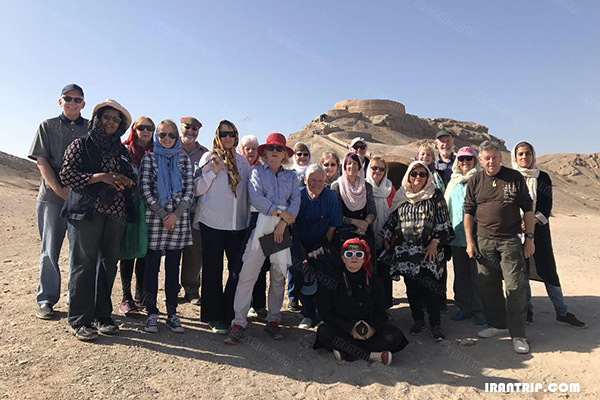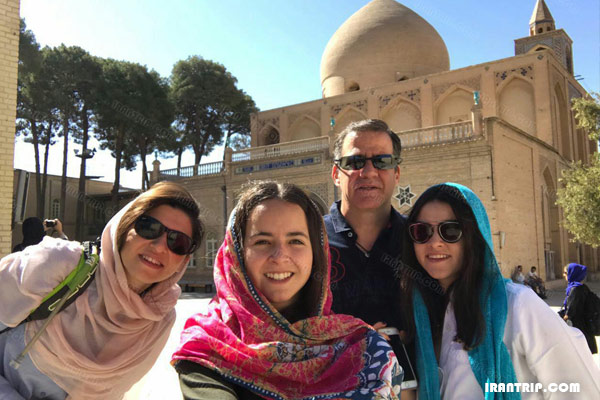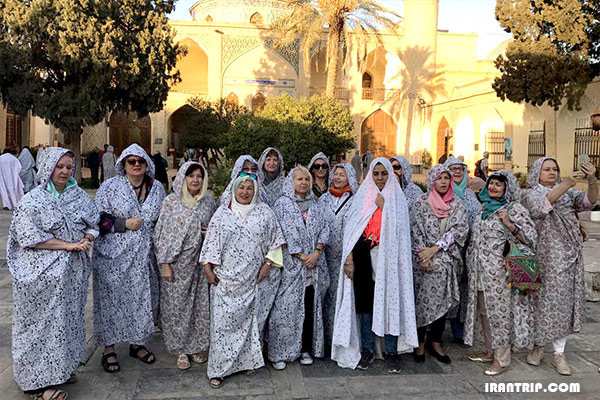Perhaps the most visible mark of Iran’s Islamic leanings is the conservative dress expected of its citizens. Although normal, Western style clothing is acceptable in private homes, when in public women are required to cover everything but their face, hands and feet.
The most common uniform consists of a head scarf (roo-sari, روسری) to conceal the head and neck, a formless, knee-length coat known as a roo-poosh (روپوش) and a long dress or pair of pants. In and around holy sites, you will be expected to dress even more modestly in a chādor, a full-length swathe of black cloth designed to cloak everything but your face from view.
The dress code can be daunting during your preparation, but roo-saris, roo-pooshes and chādors can be bought cheaply in Iran. Watch or ask friendly Iranian women for guidance and marvel at how young women are pushing the boundaries of modesty with colourful head scarves that cover only a fraction of their hair and figure-hugging roo-pooshes that reveal every curve of their bodies.
Men have a slightly easier time of things. Short-sleeved shirts and t-shirts are acceptable for daily wear. Shorts and three-quarter length pants are only acceptable on the beach.
Visiting holy sites :
Although no trip to Iran would be complete without a glimpse at the stunning architecture and sombre environments of its mosques or holy shrines, many travellers are daunted by the prospect of walking into the foreign world of a mosque. Don’t let these fears stop you, Iranians are welcoming and will understand any unintended breach of protocol.
Some mosques, and most holy shrines, require women to be wearing a chādor before entering the complex. If you don’t have one, there are sometimes kiosks by the door that lend or hire chādors. It is better for men to wear long-sleeved shirts inside a mosque or shrine, though this is not mandatory.
Shoes are not worn within prayer areas of a mosque or shrine. Busier mosques have free shoe repositories where you trade your shoes for a token. Also try to avoid mosques on the holy day of Friday and don’t photograph a mosque while prayers are taking place.
Holy shrines, like those in Mashad and Qom, are usually off limits to non-Muslims, although the surrounding complexes are usually OK. Always ask first before you enter a room you are unsure of.




